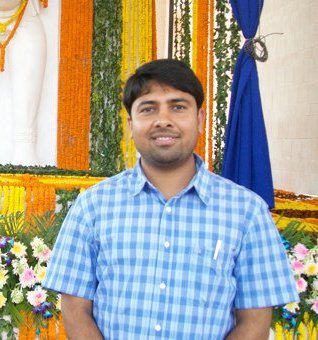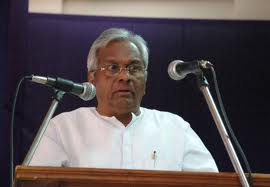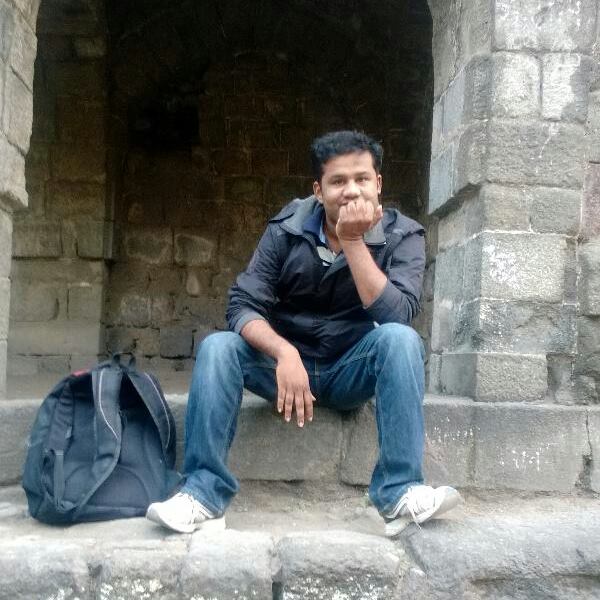Shiv Shankar Das

Abstract: The present research note highlights the relationship and the reasons behind the association between the lower caste politics and Buddhism in Uttar Pradesh, the most populated state in India next only to China, United States, Brazil and Russia. There are three reasons behind this association. First, the currently ruling Bahujan Samaj Party’s founder Kanshi Ram’s ideology of cultural change, secondly, the vision of lower castes’ champion Dr. B. R. Ambedkar to make the country as a Prabudh Bharat (Buddhist India), and thirdly the compatible and advantageous growth rate of Buddhist community in the state due to conversion of lower castes.
Since a long period, the image of Uttar Pradesh has been that of a backward or ‘sick state‘ in terms of economic and social development. Few developments indicates that it has started to take a new twist, as recently the Reserve Bank of India (RBI) credited the economic growth of Uttar Pradesh as on par with even the most developed states such as Gujarat, and others.1 Many vital economic parameters indicate the promising face of Uttar Pradesh. The planning ministry revealed that UP was among five states which had higher growth rates than their 11th Plan (2007-12) targets. Its GDP grew at 7.28% as against a target of 6.10%.2 In 2011, it was also awarded “best performing state in agriculture” by the Union Government. The state was rated as the best performing state in food grain production, clocking 47.138 million ton during 2010-11 and was given a cash prize of Rs. 2 crore, along with a trophy and a citation.3
The UP development story is not limited only to economic fields but it also goes beyond, such as in sports etc. For example, it is for the first time in the history of India that Forumla-1 Indian Grand Prix was conducted in October 2011 sucessfully. The credit of it goes to UP Government for its newly constructed International Circuit, in Gautama Buddha Nagar district (Greater Noida) named after the founder of Buddhism i.e Buddha.
Apart from this, social scientists can notice the ‘cultural changes’ which are highly visible and is argued by many dalits (following with the argument of Max Weber)4 as having great potential to significantly impact the socio-economic progress in the future. This paper is an attempt to highlight the trends and reasons of UP cultural development/change to the propagation of Buddhist symbols and culture, after dalit led Bahujan Samaj Party (BSP) captured power in UP, under the leadership of Mayawati, dalit ki beti (daughter of a lower caste)5. In the first part of the paper, the emerging nexus between Buddhism and lower caste politics is discussed. The second part deals with the three most effective reasons for stimulating the above nexus.
Buddhism and Politics in Uttar Pradesh: Emerging Trends
The most important discourse in dalit movement has been the cultural transformation i.e. to annihilate the hierarchical social divisions based on caste and to develop the scientific attitude among the people. The above point can get validity from one of the recent surveys held on 6th October, 2011 in Varanasi on the occasion of a Baudh Dhamma Deeksha Ceremony (conversion ceremony) held by the local buddhist organisations in which hundreds of local people participated. The survey, with the participation of 135 persons, in which the largest chunk was of scheduled castes (dalits) i.e 78.5% and rest of them were non-scheduled castes (12.5%) and people did not reply to their caste affiliation (8.8%), revealed: among 85% respondents, the reason for conversion mentioned was to get off the unscientific caste-based discrimination and untouchability, and aspiring strongly for liberty, freedom, equality and self-respect. Interestingly, responding to the question on their ideal personalities, they mentioned first B.R. Ambedkar (62% people), second Gautama Buddha (25% people) followed by Kanshi Ram on (20% people). Thus, it is showed that people attracted to Buddhism are mostly dalits and their ideal personalities are mainly Ambedkar, Buddha, and Kanshi Ram. Ambedkar and Kanshi Ram have struggled a lot for their cause socially, politically and culturally.
Kanshi Ram, who is regarded among Dalits as their modern champion, adopted a strategy to spread the message of those great saints and gurus such as Gautama Buddha, Kabir, Ravidas, Jyotirao Phule, Shahuji, and Narayana Guru and others, who have been great apostles of casteless and orthodox-free society.6 The common factor in all these saints’ & gurus’ teachings is that all of them have been critical of Hinduism or Brahmanism’s graded inequality and are great supporters of the Buddhist principles such as equality, liberty, social harmony, and scientific temper. The teachings of Buddhism are very much complementary to the core philosophy of saints and gurus born in lower castes. It is only Buddhism, that has been a counter-ideology of Hinduism (caste system and orthodoxy), which was embraced by Babasaheb Dr. Ambedkar in 1956 along with lakhs of his followers belonging to the untouchable community.
As Bahujan Samaj Party captured power in UP, the saints and gurus following the Buddhist traditions, especially born in lower castes, took a strong presence in the public space and discourse. The Buddhist icons/symbols, arts, and architecture (representing primarily anti-caste and scientific structure) have become highly visible throughout the state, particularly in Lucknow (the capital of Uttar Pradesh), and Gautama Buddha Nagar (NOIDA).
Though, the academicians in India are not paying much heed towards this cultural development, an often uncommented on feature which is highly visible in the public sphere on many occasions, is the UP Chief Minister and BSP supremo Mayawati’s closeness to Bhikkhus (Buddhist Monks), Buddhism and Buddhist activities. This point can be proved by many of her activities. For instance, some of the Bhikkus are nominated as the heads of institutions, entitled with the salary and power of state-minister. The last rites of BSP founder Kanshi Ram in 2006 were performed according to Buddhist traditions. The construction of a magnificent ‘Baudh Vihar Shanti Upvan’ and ‘International Research Institute of Buddhist Studies’ (IRIBS) in Lucknow, Gautama Buddha University (GBU) in NOIDA, and her 55th birth anniversary celebrations on January 15, 2011 were held with Buddhist monks’ blessings, rather than cutting a cake as usual. On the occasion of Buddha Poornima in May 2011, her government advertised the occasion in almost all the regional and national newspapers. She has named many districts, universities, hostels etc. in the name of Gautama Buddha, Dr. Ambedkar, Kabir, Ravidas, Phule and others. Recently in October, 2011, she has named the three districts, ‘Panchsheel Nagar, Bhim Nagar & Prabuddha Nagar’ in the name of Buddhist traditions. Some officials of her government reveal that she is very particular about the display of Buddhist symbols in government sponsored programs such as during the annual Lucknow Mahotsava. In the Lucknow Mahotsava 2010, a big image of Lord Buddha adorned the centre of the stage background7.
There are lots of projects which are dedicated to Buddhist aesthetics and every project is inaugurated with Buddhist rituals and cheevers (robes) are offered to Buddhist Monks by the Chief Minister Mayawati.8 On the death anniversary of BSP founder Kanshi Ram on 09th October, 2011. During the opening ceremony of Noida’s Rashtriya Dalit Smarak (National Dalit Monument), on 14th October, 2011 she performed the rites according to Buddhist traditions and offered robes and sweets etc. to the Bhikkhus before addressing thousands of people assembled there.9 This Rashtriya Dalit Smarak is also built based on Buddhist aesthetics. With her efforts while being in power, it is highly visible that she is establishing the culture of weaker sections of the society officially, worthy of display, by depicting their history and so on in the public sphere.10
Mayawati indicates her deep concern for cultural transformation and that’s why she is highly engaged in the display of Bahujan Samaj’s history in the form of statues, parks, schools, hostels, universities, districts, and other monuments which were not established before her regime. She seems to know very well that this display of lower castes’ history will strengthen the movement politically too. Her own words in this regard, “A society which does not have its history can never become a ruling society because it is history which gives inspiration, from inspiration comes awakening, awakening evolves into thoughts, thoughts firm up strength, strength creates power and power makes one ruler.”11
Please read the second and final part of this article here.
~
[1] See Times of India, 22nd October, 2011, p.18.
[2] http://articles.economictimes.indiatimes.com/2011-11-01/news/30345963_1_dalit-population-valmiki-samaj-etawah
[3] http://www.financialexpress.com/news/up-rated-best-performing-state-in-foodgrain-output/819135/0
[4] Unlike Karl Marx (1818 – 1883), who emphasized solely on economy and everything else (superstructure) under its influence, for example culture, religion etc., Max Weber (1864–1920), a German sociologist and political economist emphasized the importance of cultural influences embedded in religion as a means for understanding the genesis of capitalism. See. Weber’s ‘The Protestant Ethic and the Spirit of Capitalism’ (1905).
[5] Due to magnificent structure of construction (in the form of park, vihars, statues of saints and domes etc.) across the Uttar Pradesh in BSP regime, there is everywhere a big news about it positively or otherwise in the public, as well as in academia. As BSP claims to follow the ideology of Dr. Ambedkar, also cites many reasons behind such promotion of this culture such as historical exclusion of this egalitarian culture. Dr. Ambedkar presented a Memorandum in the International Buddhist Conference at Rangoon (Maynmar) on 04th December, 1954 in which he also proposed that to propogate Buddhism in India, it is necessary to construct Buddhist places or Viharas especially in big cities such as Delhi, Bombay, Madras, and Nagpur. Intersetingly, he prefered to make the splendid huge structure. In his own words, “temples (Buddhist vihars) should be as big as to create the impression that something big is really happening.” (Writings & Speeches, Vol. 17(iii), p 506-508.
[6] See Kanshi Ram, 1982. The Chamcha Age [An Era of Stooges], Delhi. Published by himself.
[7] Personal interview with Bhante Chandima, Chairman of IBRI, Lucknow on 14th October, 2011 at NOIDA .
[8] Personal observation.
[9] Ibid.
[10] In her address she said that on one side of Yamuna (Delhi), the west bank, are the monuments of Gandhi-Nehru family (caste Hindus) while on her side (East Bank of Yamuna, Uttar Pradesh), she is opening the Rashtriya Dalit Smarak (National Dalit Monument) named after the great saints born in lower castes and who staunchly fought for equality, built at the cost of around 7000 million of Indian Rupees.
[11] See. Towards An Equalitarian Society – U.P Buddhist Tourism Guide Book, p. (i), pub. by Information and Public Relations Department U.P, Lucknow.
~~~
Shiv Shankar Das is a researcher at the Centre for Political Studies, Jawaharlal Nehru University.










